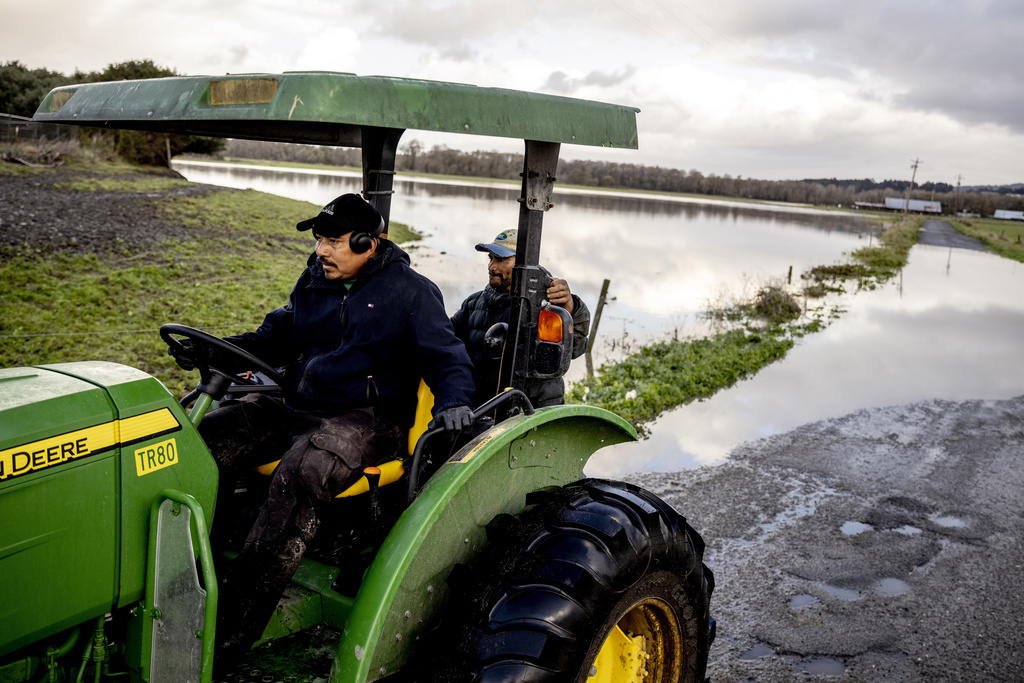Storm Brings Flooding, Snow, and Power Outages Nationwide \ Newslooks \ Washington DC \ Mary Sidiqi \ Evening Edition \ A powerful storm brought severe flooding, power outages, and early ski openings to California and the Pacific Northwest, while snow and rain eased drought conditions on the East Coast. Communities faced mudslides, closed highways, and travel disruptions, with hundreds of thousands left without power. The storm’s impacts underscored the growing dangers of extreme weather across the U.S.

Northern California Storm: Quick Looks
- California Flooding: Evacuations near Eel River; Highway 1 shut due to severe flooding.
- Mudslides: Landslides near Healdsburg threatened homes as unstable hillsides shifted.
- West Coast Impact: 170,000+ without power in Washington; gale warnings issued.
- Ski Season Boost: Heavy snow opened Tahoe resorts early despite dangerous winds.
- East Coast Relief: Rain and snow helped reduce drought but created travel challenges.
Deep Look
Northern California Faces Flooding and Mudslides
California bore the brunt of the atmospheric river as it drenched the state with heavy rains. In Humboldt County, evacuation orders were issued near the Eel River due to rising floodwaters, though forecasts later downgraded the threat to moderate flooding. Still, local authorities urged residents to stay vigilant. Scenic Highway 1, also known as the Pacific Coast Highway, was closed in Mendocino County north of Point Arena due to flooding near the Garcia River. Officials provided no estimate for when the highway would reopen.
In Sonoma County, mudslides near Healdsburg raised alarms. One slide threatened a hillside home perched precariously above a muddy slope, sparking concerns that additional rain could trigger further movement, potentially endangering downhill properties. Tennis Wick, Sonoma County’s permits and resource director, highlighted the ongoing instability, noting the area’s history of landslides. Residents in the area, like Dana Eaton, described the situation as a constant battle with nature. “It’s wet, constant rain,” Eaton said. “So far, nothing major, just concerns.”
Pacific Northwest: Power Outages and High Winds
The storm’s intensity disrupted daily life. In Issaquah, Washington, homes were left severely damaged, prompting city officials to set up warming centers with internet and device charging for affected residents. One official described the devastation as unprecedented, noting it was the worst storm in decades.
Boost to Ski Resorts Amid Severe Snowfall
While the storm created chaos in many areas, it brought an unexpected silver lining for ski resorts in the Sierra Nevada and Tahoe regions. Palisades Tahoe recorded wind gusts of 128 mph, temporarily shutting down some lifts, but nearby Sugar Bowl capitalized on the conditions by opening three lifts on Friday. This marked Sugar Bowl’s earliest opening in 20 years. Marketing manager Maggie Eshbaugh expressed optimism about additional terrain openings in the coming weeks.
East Coast: Relief and Challenges
The storm’s impacts extended to the East Coast, where regions welcomed rain and snow after an unusually dry fall. The precipitation offered much-needed relief to areas battling drought and rare wildfires, including New York and New Jersey. Bryan Greenblatt, a National Weather Service meteorologist, emphasized that while the rain was beneficial, it would not completely end drought conditions.
A Storm Born From a Bomb Cyclone
Meteorologists explained that the storm began as a bomb cyclone—a rapidly intensifying weather system—before transforming into the strongest atmospheric river of the season. This atmospheric river funneled vast amounts of moisture from the Pacific Ocean, drenching Northern California and creating conditions ripe for flash flooding and debris flows.
Looking Ahead
As the storm moves out, recovery efforts continue on both coasts. In California, crews are focused on clearing debris and restoring power, while in the Northeast, melting snow will add to water supplies. Despite the disruptions, the storm has provided much-needed precipitation to drought-stricken areas, though officials remain cautious about further severe weather in the weeks ahead.
Storm Brings







